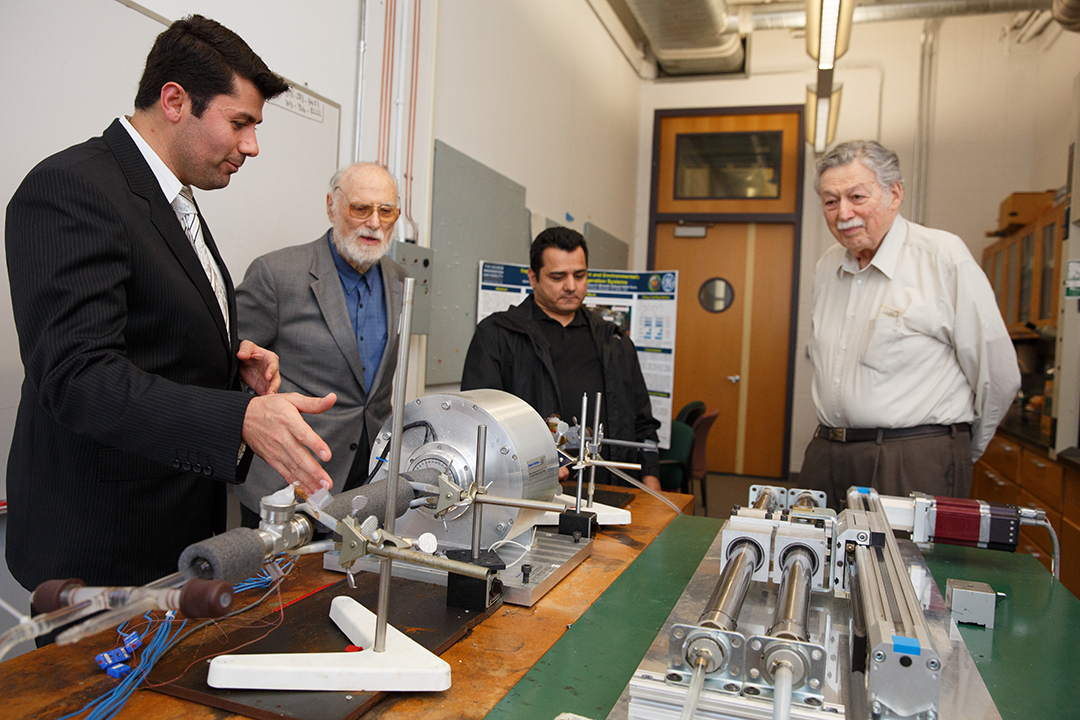Question: Please describe in simple terms the research that you conduct. What are the goals of this research?
Answer: In the advancement of alternative energy sources, and the critical importance of the global warming, magnetic refrigeration is a promising energy efficient and environmentally friendly technology to replace conventional vapor-compression techniques. Our research aims to design, develop, and implement the first scalable commercially viable compressor-free magnetic refrigerator system.
Question: What is the significance of this research in terms of practical applications?
Answer: Magnetic refrigeration cooling technology has many useful applications in different fields. Besides being employed in the next generation refrigerator systems in household and supermarkets, this technology can be used for the next generation of heat pumps and air conditioning unites (HVAC). In addition, this technology can be used to cool down computer microchip ICs with the use of microfluidic channels.
Question: What is the current state of Magnetic Refrigeration? And what makes your work unique from other research being conducted in this area?
Answer: Some of the main challenges on the way of magnetic refrigeration to become commercially feasible are refrigerant magnetic hysteresis, low cooling capacity, finding suitable materials as refrigerant that can be used in room temperature with sufficiently wide operating temperature range. Previous works on magnetic refrigeration technology are based on bulk refrigerants. We discovered and showed that by utilizing nanostructural material as refrigerant the adiabatic temperature change per unit of applied magnetic field is increased and the hysteresis is lessened. Our innovative approach will resolve all these challenges and permit the design and implementation of a commercially viable, sustainable, compressor-free, environmentally friendly magnetic refrigerator system.
Question: What are the challenges or limitations associated with this field of research?
Answer: So far, no successful magnetic refrigerator has been built due to the low temperature change of solid bulk refrigerant, and the added burden of hysteresis. We have shown theoretically and supported experimentally that nanomaterials have a higher magnetocaloric effect and less hysteresis compared to their bulk counterpart. As a result the abovementioned challenges can be solved by utilizing appropriate magnetic nanoparticles as the refrigerant to pave the way for this technology to become commercially available.
Question: What successes or milestones have you reached thus far in this research?
Answer: We have shown theoretically that nanomaterials have a higher magnetocaloric effect and less hysteresis compared to their bulk counterpart. Our theoretical work was validated experimentally by synthesis and characterization of a few magnetic nanoparticles. We have shown the correlation between the size, shape, and morphology of magnetic nanoparticles to their magnetic and magnetocaloric properties. More research needs to be done to find the most suitable magnetic nanoparticles with the desired properties to be used as refrigerant.
Question: Are you collaborating with anyone else?
Answer: The Center for Functional Nanomaterials at the Brookhaven National Laboratory of the Department of Energy have agreed to join and collaborate with our group in synthesizing suitable nanomaterials that can be used as refrigerant in magnetic refrigerators.
Question: Who are your research sponsors?
Answer: General Electric (GE) and the Department of Energy have supported our research.


